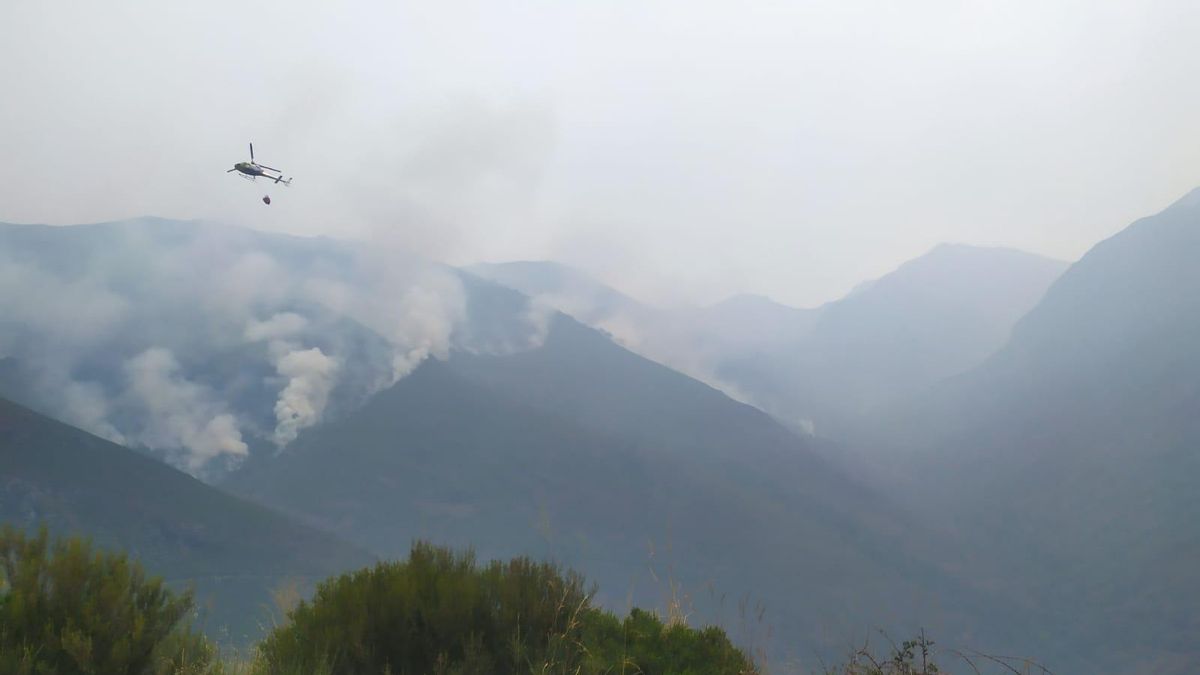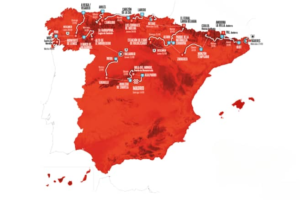The first (evening) of the Xunta is this Tuesday, but the fire has been burning days in the area of Pena Trevinca, the highest summit in Galicia, on the border between the provinces of Ourense and Zamora, and a place of high natural value. The flames have already burned the peaks and the slope has lowered until the teixadal from Casaio, a forest of centenary cloths that resist in the depths of the valley.
It is not that the Galician government does not know that there are flames in this place. On the ground is a brigade of the Xunta de Galicia. They have stopped the fire in the teixadal And a helicopter makes repeated downloads to try to contain the fire, which continues to progress. Brigadistas take off the forest of cloth. They do not have it so clear with that of Foio Castaño, populated by other species of native trees. But the Ministry of Rural Affairs still does not mention Trevinca and has limited itself to indicating that there is a fire that has entered from Zamora and is calcining land in the municipality of A Veiga.
This is a difficult access place, between steep slopes. To get by car it is necessary to take close clues that start between the slate quarries that have cut huge cuts in the mountain. If you want to reach the centenary forest, you have to walk.
On Tuesday morning there are two fire extinguish brigades in the area. The two most advanced members of one of them, of the Xunta, have stopped to rest in a curve of the road that offers a panoramic view of the teixadal. Tree silhouettes are distinguished as far as smoke. They prefer not to give their name, but they say that they started the day getting off the helicopter in a high like in an action movie -the helicopter will then leave another scene worthy of the cinema when approaching the edge of the road with the open door to throw a bag with food and drink.
The brigades also look at their heads, where a bulldozer has been working on an impossible slope. It is one of the improvised media to fight the fire. One of the quarries has lent it and an already retired driver who is opening a firewall has been commanded.
Ahead, on foot, the president of the community of Montes de Casaio (Carballeda de Valdeorras, Ourense), Francisco Fernández. Corroborates that there they have been fighting in the mountains for days against the flames, which have entered from Zamora. He assures, specifically, that he and other neighbors have “three days buzzing, that is, taking hold of batters and turning off the flames without more means. Over there, until Tuesday, “nobody appeared.” Now, Fernández, who communicates with those who continue in the zone of fire by Walkie-Talkie, makes requests to the head of the brigades for the helicopter to download at specific points.

One of the brigades shows images of the teixadalhow there are dead trees from old because it is a “without human action” forest, a natural jewel of Galicia. It also teaches what remains of a stone construction: it is one of the hairs that the maquis used in the Civil War. The area is known by the natural environment, slate quarries and the activity of the anti -Franco guerrillas, but also by the Wolframio mine of Casaio, which was exploited by the Nazis.
La Ocultación de la xunto
Approximately at the same time that this forest firefighter watches from the way the progress of the flames in Pena Trevinca, the Xunta gives the first clue – which does not confirm – institutional that these summits are eating the fire. The notice about the fire had already been thrown several accounts through social networks, in which images of the burned area began to circulate, while the Galician government continued to hide it. Nor has he informed that at least one natural park, that of the Serra da Enciña da Lastra, has seen the flames enter its territory.
After the trail of criticism for not informing, an update in the account in X (formerly Twitter) of 085 – the phone to give notices about forest fires – collected, after 2 pm on Tuesday, that the flames from Zamora affect the parish of A Ponte, in the municipality of A Veiga. Nothing else. It does not mention Trevinca Pena or the natural spaces of the area. He adds that the affected surface, pending subsequent calculations, is around 20 hectares. On the ground it seems difficult for this figure to even approach reality.






